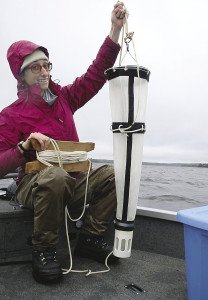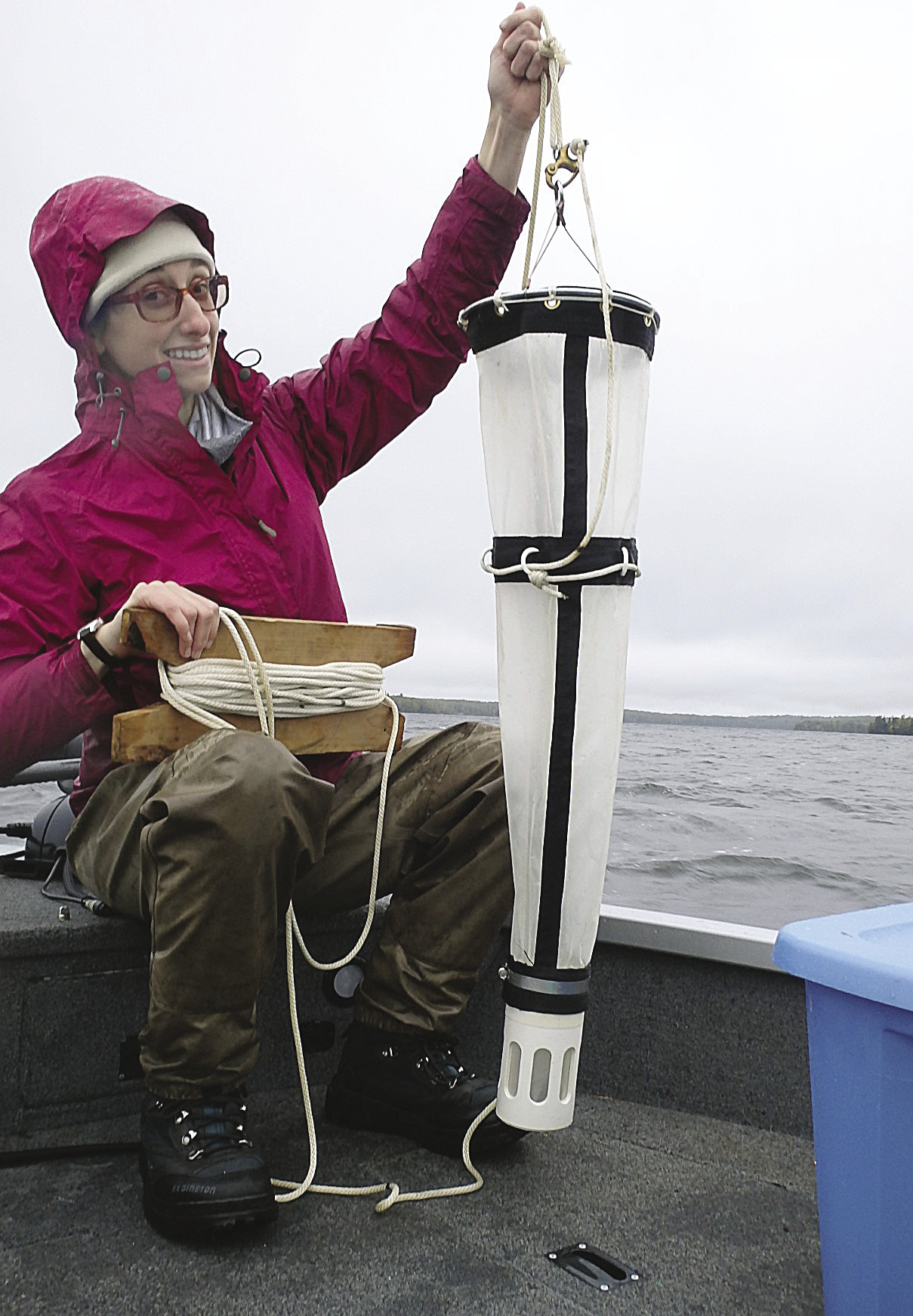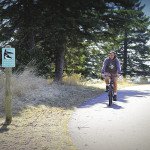Grand Marais—Spotted knapweed. Sea lamprey. Emerald ash borer. What do all three have in common? They’re all invasive species. And they’re all coming, or have already arrived, to the Northern Wilds.
Invasive species can travel in many forms, show up in a variety of sizes and move through air, on land or via water. Regardless of how an invasive species spreads, they often share the same disturbing traits and tendency to destroy valuable habitat.
“Along the North Shore, invasive species are anything that’s not native and causes economic or ecological harm,” said Amanda Weberg, the Cook County aquatic invasive species coordinator.

For Weberg, invasive species are serious business. That makes sense when one considers water covers 1,887 square miles (57 percent) of the 3,340 square miles in Cook County. Weberg’s primary role as the AIS coordinator for the county is to educate the public about how destructive invasive species can be in some of the most treasured land and water in Minnesota.
“There are some invasive species that are transported by birds or wind, but it’s pretty minuscule,” Weberg said. “Humans are really the ones making invasives spread faster than they normally would.”
There are presently two aquatic invasive species in Cook County and the northern tip of Lake County that will be extremely difficult to eradicate, according to Weberg. The two aquatic invaders are spiny water fleas and rusty crayfish. The spiny water flea has found its way to some of the region’s most pristine lakes, including Clearwater Lake up the Gunflint Trail. Removing the pesky “flea” from lakes such as Clearwater would involve a complete kill of everything living in the lake, Weberg said, a move that is simply not feasible. Rather, halting the spread of the invasive is the key to limiting potential harm to other Gunflint Trail lakes and beyond.
“It’s going to be about prevention through education,” Weberg said, “and just making sure people don’t continue to bring them in from elsewhere.”
When it comes to Lake Superior, the list of non-native species sits at more than 100, though a non-native is not necessarily the same as an invasive species. However, certainly there are unwanted species wreaking havoc in the big lake, including the ghoulish-looking sea lamprey. Sea lamprey have an eel-like body and a mouth which features a dozen circular rows of sharp teeth. Sea lamprey have a nasty history that includes devastating Lake Superior’s lake trout population. Furthermore, sea lamprey—as with many other invasive species—are expensive to eradicate or even control. According to the Great Lakes Fishery Commission, the United States spends about $14 million a year on lamprey control. Canada spends about $7 million.
However, the story does not end with aquatic invaders when it comes to invasive species entering the Northern Wilds.
In the fall of 2015, emerald ash borer, the invasive insect currently threatening millions of acres of Minnesota forests in the southern part of the state, was discovered in Duluth.
Mark Abrahamson, an entomologist for the Minnesota Department of Agriculture, said the pesky bug will almost certainly continue its advance along the North Shore in the coming years.
“Along Lake Superior emerald ash borer will probably do just fine all the way along Highway 61 up to Canada,” he said.
The unknown for the emerald ash borer as it pertains to the North Woods is how the insect will fare on inland forests. Gary Swanson, a silviculturist for Chippewa National Forest in Minnesota, said emerald ash borers can change the configuration of the forest very quickly, but that it’s not certain if the bug can survive the harsh winters that historically visit the inland forests of northern Minnesota, including the Boundary Waters Canoe Area Wilderness.
“For northern Minnesota, it’s kind of a mixed bag,” Swanson said about the advance of emerald ash borer. “Along the big lake, yeah, it’s going to spread and probably have a serious impact. And inland, the threat is there, but nobody is sure about how things will play out.”
If indeed the emerald ash borer—or any invasive species, for that matter—does reach the BWCAW, there will be little that can be done from the perspective of forest management. Because the BWCAW is managed as wildreness, active management is not allowed.
When it comes to invasive species, education and understanding of how to prevent their continued spread seems to be a key aspect for at least slowing momentum. Everyone who enjoys the area can participate in this role.
“You should care about invasive species along the North Shore,” Weberg said, “because you come here and you live here for its clean and pristine waters and you want to keep it that way for future generations.”—Joe Friedrichs






